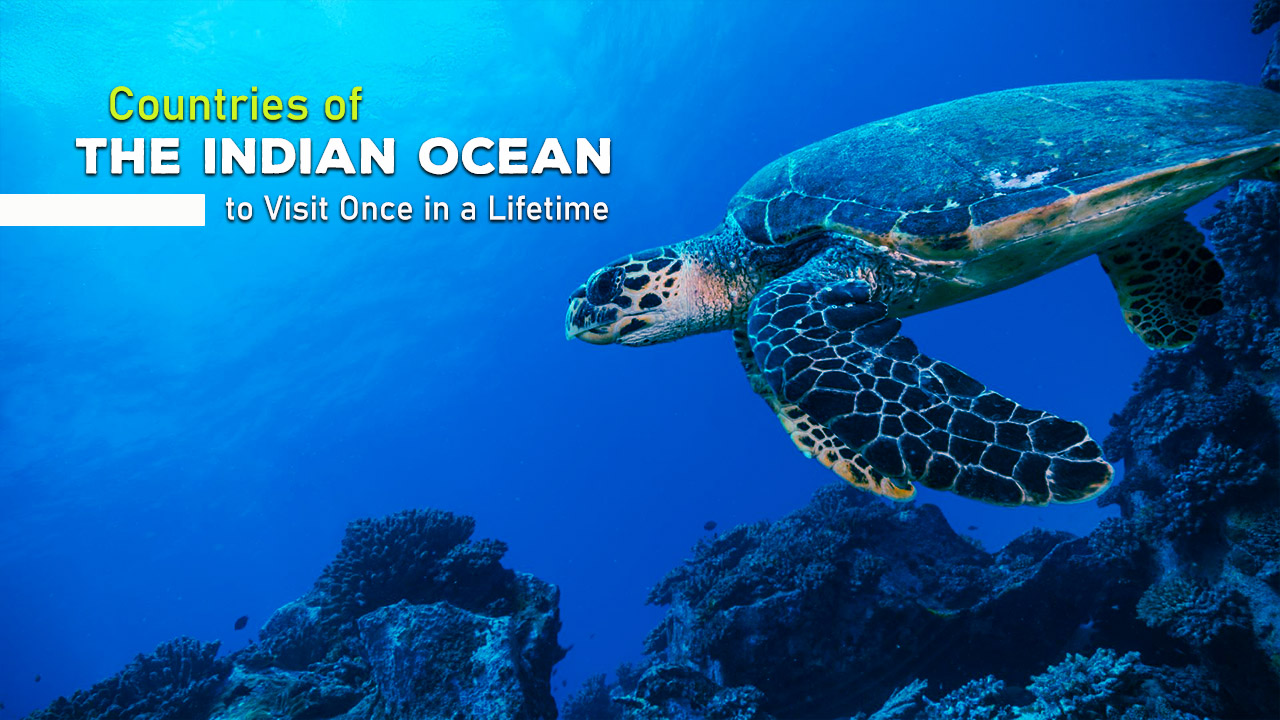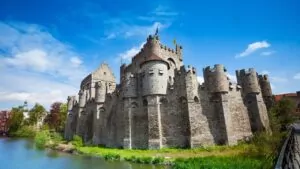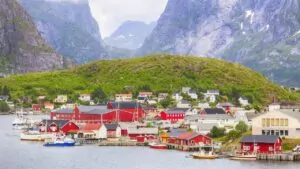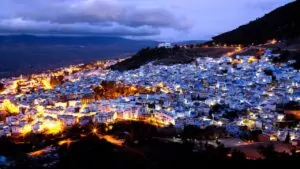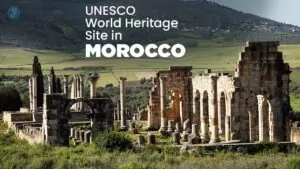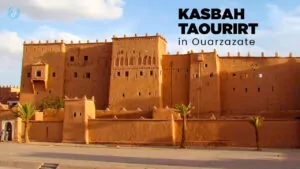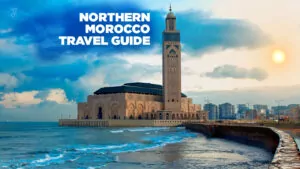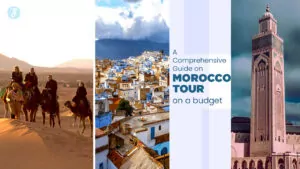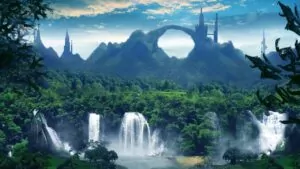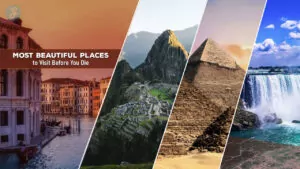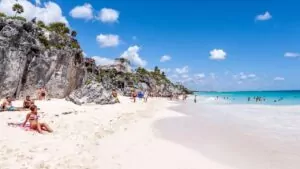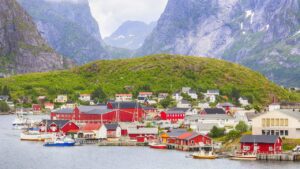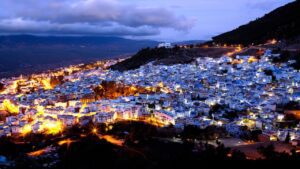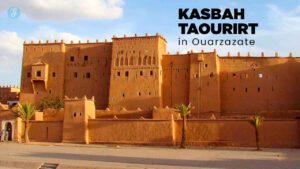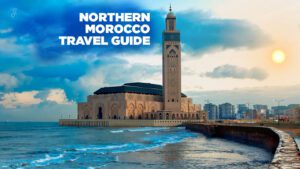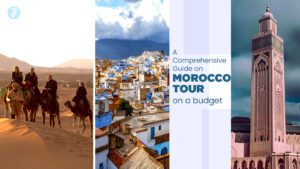The Indian Ocean, renowned for its pristine waters, pristine beaches, and rich cultural heritage, harbors some of the world’s most captivating destinations. The countries bordering this vast body of water, from the Maldives’ coral atolls to Madagascar’s unique wildlife, offer experiences that are truly once in a lifetime. In this comprehensive guide, we’ll explore nine countries of Indian Ocean to Visit in a Lifetime, each with its own unique charm and appeal.
The Indian Ocean region is a treasure trove of natural wonders, historical sites, and diverse cultures. It’s a place where you can dive with whale sharks in the morning, explore ancient temples in the afternoon, and watch the sun set over endless horizons in the evening. Whether you’re a nature enthusiast, a history buff, or simply looking for the perfect beach getaway, these nine countries promise unforgettable experiences that will leave you with memories to cherish for a lifetime.
Join us as we embark on a journey through these enchanting destinations, uncovering hidden gems and must-see attractions along the way. From the well-known paradise of the Seychelles to the lesser-explored coasts of Mozambique, we’ll guide you through what makes each of these countries a bucket-list-worthy destination.
1. Maldives
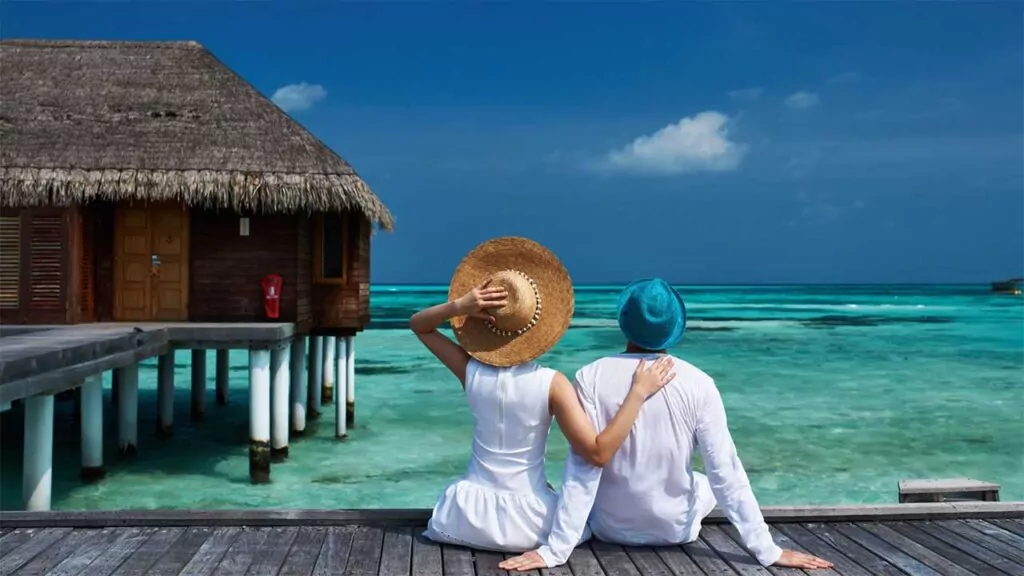
The Maldives, a nation of 26 coral atolls comprising 1,192 islands, is the epitome of tropical luxury and natural beauty. Located southwest of Sri Lanka, this island country is renowned for its stunning blue lagoons, vibrant coral reefs, and iconic overwater bungalows.
Natural Wonders
The Maldives is home to some of the world’s most beautiful beaches. The soft, white sand and turquoise waters create a postcard-perfect scene at every turn. The country’s marine ecosystem is equally impressive, with coral reefs teeming with colorful fish, manta rays, and sea turtles.
Key natural attractions include:
- Baa Atoll: A UNESCO Biosphere Reserve known for its rich marine life
- Hanifaru Bay: Famous for large gatherings of manta rays and whale sharks
- Addu Atoll: The southernmost atoll, featuring unique heart-shaped islands
Activities and Experiences
The Maldives offers a wealth of activities for visitors:
- Snorkeling and Diving: With visibility often exceeding 30 meters, the Maldives is a paradise for underwater enthusiasts.
- Water Sports: Try windsurfing, jet-skiing, or paddleboarding in the calm lagoons.
- Island Hopping: Explore different islands, each with its own character and charm.
- Spa Treatments: Indulge in world-class spa experiences, often in overwater pavilions.
- Sunset Cruises: To watch spectacular Indian Ocean sunsets, take a traditional dhoni boat ride.
Cultural Insights
The Maldives have a rich culture that draws from South Asian, Arab, and African traditions in addition to being known primarily for its natural beauty.
- Language: The official language is Dhivehi, an Indo-Aryan language.
- Religion: Islam is the state religion, and visiting a local mosque can provide cultural insights.
- Cuisine: Try local dishes like mas huni (tuna and coconut mix) and garudhiya (fish soup).
Practical Information
- Best Time to Visit: December to April for dry, sunny weather
- Visa: 30-day visa on arrival for most nationalities
- Currency: Maldivian Rufiyaa (MVR), though US dollars are widely accepted.
- Getting Around: Seaplanes and speedboats are common for island travel.
Sustainability Efforts
The Maldives is at the forefront of climate change impacts, with rising sea levels threatening its low-lying islands. Many resorts are implementing eco-friendly practices.
- Marine conservation programs
- Coral reef restoration projects
- Use of solar energy and sustainable building materials.
By choosing eco-conscious accommodations, visitors can contribute to the preservation of this unique destination.
2. Seychelles
The Seychelles, an archipelago of 115 islands in the Indian Ocean, is known for its exceptional beauty, with powder-white beaches, lush tropical vegetation, and distinctive granite boulders. This nation, located off the east coast of Africa, offers a perfect blend of luxury, adventure, and natural wonders.
Natural Wonders
The Seychelles’ landscapes are characterized by:
- Pristine Beaches: Anse Source d’Argent on La Digue and Anse Lazio on Praslin are often cited as some of the world’s most beautiful beaches.
- Unique Granite Formations: Massive, smooth granite boulders create stunning coastal scenery, especially on islands like La Digue and Mahé.
- Vallée de Mai: A UNESCO World Heritage site on Praslin, home to the rare coco de mer palm and the Seychelles black parrot.
Wildlife and Conservation
The Seychelles is a haven for rare and endemic species.
- Aldabra Giant Tortoise: Found on Aldabra Atoll, another UNESCO World Heritage Site
- Seychelles Warbler: A rare bird successfully conserved from near extinction.
- Marine life: diverse coral reefs, whale sharks, and sea turtles
Activities and Experiences
Visitors to the Seychelles can enjoy:
- Island Hopping: Each island has its own character, from the main island of Mahé to smaller, more secluded islands.
- Hiking: Trails like the Copolia Trail on Mahé offer panoramic views of the archipelago.
- Water Sports: Excellent conditions for sailing, kayaking, and stand-up paddleboarding.
- Fishing: Both big game fishing and fly fishing are popular.
- Cultural Tours: Visit the capital Victoria, one of the world’s smallest capitals, to explore its Creole heritage.
Cuisine and Culture
Seychellois culture is a vibrant mix of African, European, and Asian influences.
- Creole Cuisine: Try dishes like octopus curry, grilled fish, and breadfruit chips.
- Music and Dance: Experience the lively sega and moutya dances.
- Art: Visit local galleries showcasing Seychellois painters and sculptors.
Practical Information
- Best Time to Visit: April to May and October to November for calmer seas and milder weather
- Visa: No visa is required for most nationalities.
- Currency: Seychellois Rupee (SCR)
- Getting Around: Domestic flights, ferries, and car rentals are available
Sustainability Initiatives
The Seychelles is committed to preserving its natural heritage.
- Marine Protected Areas: Over 30% of its waters are protected.
- Sustainable Tourism: Many resorts implement eco-friendly practices.
- Plastic Ban: The country has banned single-use plastics
3. Mauritius
Mauritius, an island nation in the Indian Ocean about 2,000 kilometers off the southeast coast of Africa, is known for its beaches, lagoons, and reefs. Beyond its natural beauty, Mauritius is a vibrant melting pot of cultures, offering visitors a unique blend of African, Indian, European, and Chinese influences.
Natural Beauty
Mauritius boasts diverse and stunning landscapes.
- Beaches: From the popular Flic en Flac to the more secluded Belle Mare
- Black River Gorges National Park: Showcasing the island’s volcanic origins with waterfalls and unique wildlife
- Chamarel Seven Colored Earth: A geological formation featuring sand dunes of seven distinct colors.
Cultural Diversity
The island’s colonial port history has resulted in a rich cultural tapestry:
- Languages: English is the official language, but French and Creole are widely spoken.
- Religions: Hindu temples, Christian churches, and Muslim mosques coexist peacefully.
- Festivals: Experience colorful celebrations like Diwali, Chinese New Year, and Cavadee.
Activities and Attractions
Mauritius offers a wide range of experiences:
- Water Sports: World-class diving, snorkeling, and kitesurfing
- Golf: Several championship courses with breathtaking ocean views
- Hiking: Trails in Black River Gorges National Park and Le Morne Brabant (a UNESCO World Heritage site)
- Cultural Tours: Visit the capital, Port Louis, tea plantations, and rum distilleries.
- Wildlife encounters: Look for giant tortoises at La Vanille Nature Park or pink pigeons at Ile aux Aigrettes.
Mauritian Cuisine
The local food scene reflects the island’s cultural diversity.
- Street Food: Try dholl puri (flat bread with split peas) and gateaux piments (chili cakes).
- Seafood: Fresh fish dishes, such as vindaye (fried fish with mustard sauce), are popular.
- Fusion Cuisine: Restaurants offering creative blends of Indian, Chinese, and French influences
Practical Information
- Best Time to Visit: May to December for drier, cooler weather.
- Visa: Visa-free access for many nationalities
- Currency: Mauritian Rupee (MUR)
- Getting Around: Renting a car is popular, but taxis and public buses are also available.
Sustainable Tourism
Mauritius is working towards sustainable tourism practices.
- Coral Reef Conservation: Programs to protect and restore marine ecosystems
- Eco-lodges: Increasing number of environmentally friendly accommodations
- Community-based Tourism: Initiatives to involve local communities in tourism benefits.
Unique Experiences
- Submarine Rides: Explore the underwater world without getting wet.
- Sega Nights: Experience traditional Mauritian music and dance.
- Sugar Estate Tours: Learn about the island’s sugar industry history.
Mauritius offers a perfect blend of relaxation, adventure, and cultural immersion, making it a must-visit destination for any Indian Ocean traveler.
4. Sri Lanka
Sri Lanka, an island nation south of India, is a land of contrasts. Known as the “Pearl of the Indian Ocean,” it offers visitors a unique blend of ancient history, lush landscapes, and vibrant culture. From golden beaches to misty mountains, Sri Lanka packs a diverse range of experiences into a relatively small area.
Historical and Cultural Sites
Sri Lanka has a rich history dating back over 2,500 years.
- Ancient Cities: Explore UNESCO World Heritage sites like Anuradhapura, Polonnaruwa, and Sigiriya.
- Temples: Visit Kandy’s Temple of the Tooth, which is said to house a Buddha relic.
- Colonial Architecture: Admire Dutch and British influences in cities like Galle and Colombo.
Natural Wonders
The country’s diverse landscapes offer something for every nature lover:
- Beaches: From the popular stretches of Mirissa to the secluded coves of Trincomalee
- Hill Country: The misty mountains around Nuwara Eliya and Ella are covered in tea plantations.
- National Parks: Yala, Udawalawe, and Wilpattu for wildlife safaris.
Wildlife and Biodiversity
Sri Lanka is a hotspot for biodiversity.
- Elephants: See these gentle giants in their natural habitat at various national parks.
- Leopards: Yala National Park is home to one of the world’s highest leopard densities.
- Blue Whales: Mirissa is one of the world’s best places to spot blue whales.
Activities and Experiences
- Train Journeys: Take the scenic rail route through tea country.
- Surfing: Catch waves at popular spots like Arugam Bay.
- Ayurveda: Experience traditional wellness treatments.
- Cooking Classes: Learn to prepare authentic Sri Lankan cuisine.
- Tea Plantation Tours: Visit working tea estates and learn about tea production.
Sri Lankan Cuisine
Sri Lankan food is known for its bold flavors and use of spices.
- Rice and curry: A staple meal with a variety of vegetable and meat curries
- Hoppers: Bowl-shaped pancakes are frequently served with eggs or curry.
- Seafood: Fresh catches prepared with local spices
Practical Information
- Best Time to Visit: December to March for the west coast, April to September for the east coast
- Visa: For most visitors, Electronic Travel Authorization (ETA) is required.
- Currency: Sri Lankan Rupee (LKR)
- Getting Around: Trains, buses, and hired cars with drivers are popular options.
Sustainable Tourism
Sri Lanka is working towards more sustainable tourism practices.
- Eco-lodges: Increasing number of environmentally friendly accommodations
- Wildlife Conservation: Programs to protect elephants and marine life
- Community-Based Tourism: Tourism initiatives to support local communities.
5. Madagascar
Madagascar, the world’s fourth-largest island, is a biodiversity hotspot unlike any other. Located off the southeast coast of Africa, it’s home to an astonishing array of plants and animals found nowhere else on Earth. From lemurs to baobab trees, Madagascar offers nature enthusiasts and adventure seekers a truly unique experience.
Unique Wildlife
Madagascar’s isolation has led to the evolution of distinctive wildlife.
- Lemurs: Only Madagascar is home to more than 100 species of these primates.
- Fossa: The island’s largest predator, related to mongooses
- Chameleons: Home to about half of the world’s chameleon species
Flora and Landscapes
The island’s plant life is equally diverse and unique.
- Avenue of the Baobabs: An iconic landscape of ancient Baobab trees.
- Spiny Forest: A desert-like ecosystem with unusual plant adaptations
- Rainforests: lush tropical forests home to countless species.
National Parks and Reserves
Madagascar’s protected areas showcase its natural wonders:
- Andasibe-Mantadia: Known for the indri, the largest living lemur.
- Isalo National Park: Features stunning sandstone formations and canyons
- Tsingy de Bemaraha: A UNESCO World Heritage site with unique limestone pinnacles
Cultural Experiences
Madagascar’s culture is a blend of Southeast Asian and African influences.
- Traditional Villages: Visit rural communities to learn about local customs.
- Malagasy Music: Experience traditional music forms like hiragasy.
- Crafts: Shop for intricate woodcarvings, textiles, and gemstones.
Activities and Adventures
- Trekking: Explore diverse landscapes from rainforests to desert areas.
- Wildlife Watching: guided tours to spot lemurs, chameleons, and birds
- Diving and snorkeling: Discover vibrant coral reefs and marine life.
- River Trips: Canoe adventures on rivers like the Tsiribihina
- Beach Relaxation: Unwind on pristine beaches like those of Nosy Be.
Malagasy Cuisine
Madagascar’s cuisine reflects its multicultural heritage:
- Ro: The staple rice dish often served with laoka (side dishes).
- Ravitoto: A popular dish made from cassava leaves and pork
- Fruits: Try unique local fruits, such as litchis and passion fruit.
Practical Information
- Best Time to Visit: April to November for dryer weather
- Visa: Obtainable on arrival for most nationalities
- Currency: Malagasy Ariary (MGA)
- Getting Around: Domestic flights, taxi-busses (bush taxis), and car rentals with drivers
Conservation Efforts
Madagascar faces significant environmental challenges:
- Reforestation projects: efforts to restore native forests.
- Community Conservation: Wildlife protection programs that involve local communities.
- Ecotourism: Sustainable tourism development to support conservation.
6. Tanzania (including Zanzibar)
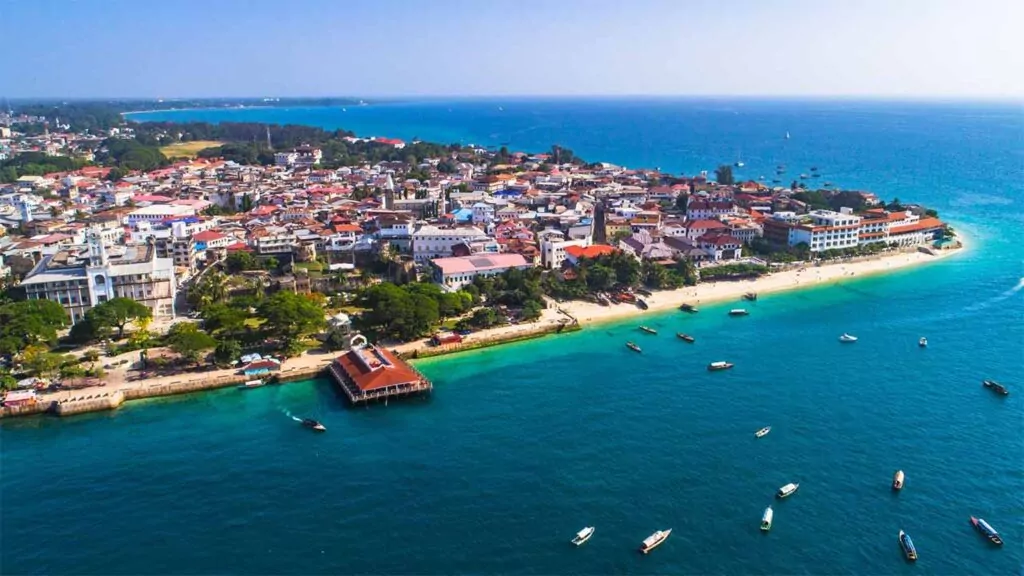
Tanzania, located in East Africa, offers an incredible diversity of experiences, from the vast savannas of the Serengeti to the pristine beaches of Zanzibar. It’s a country that combines world-class wildlife viewing, rich cultural experiences, and tropical island relaxation.
Mainland Tanzania
Wildlife and National Parks
Tanzania is renowned for its wildlife and natural beauty.
- Serengeti National Park: Famous for the annual wildebeest migration
- Ngorongoro Crater: A UNESCO World Heritage site teeming with wildlife
- Mount Kilimanjaro: Africa’s highest peak and a popular trekking destination
Activities and Experiences
- Safari: Game drives to spot the “Big Five” (lion, leopard, rhinoceros, elephant, and Cape buffalo).
- Hot Air Balloon Rides: Soar over the Serengeti for a bird’s-eye view of wildlife.
- Cultural Tours: Visit Maasai villages to learn about traditional ways of life.
- Trekking: Climb Mount Kilimanjaro or explore other hiking trails.
Tanzanian Mainland Cuisine
The mainland offers a variety of culinary experiences:
- Nyama Choma: Grilled meat, typically goat or beef
- Ugali: A stiff maize flour porridge, a staple food
- Mandazi: Sweet, fried bread is often enjoyed for breakfast.
Zanzibar
Beaches and Water Activities
Zanzibar, an archipelago off the coast of Tanzania is known for its stunning beaches.
- Nungwi: crystal-clear waters and white sand beaches
- Mnemba Atoll: World-class snorkeling and diving spot
- Paje: Popular for kitesurfing and windsurfing
Historical and Cultural Sites
Arab, Persian, Indian, and European cultures have all influenced Zanzibar’s rich history.
- Stone Town: A UNESCO World Heritage Site with winding alleys and historic buildings
- Spice Tours: Learn about Zanzibar’s famous spice trade.
- Jozani Forest: Home to the rare red colobus monkey
Zanzibari Cuisine
Zanzibar’s cuisine reflects its multicultural heritage:
- Seafood: Fresh catches prepared with local spices
- Spices: Incorporate cloves, cinnamon, and nutmeg in many dishes.
- Swahili dishes: Try specialties like biryani and octopus curry.
Practical Information for Tanzania and Zanzibar
- Best Time to Visit: June to October for wildlife viewing, January to February for beach holidays
- Visa: Available on arrival or online in advance
- Currency: Tanzanian Shilling (TZS)
- Getting Around: Domestic flights, buses, and ferry services to Zanzibar
Sustainable Tourism
Tanzania is working to develop sustainable tourism practices.
- Community-based Tourism: Initiatives to involve local communities in tourism benefits
- Wildlife Conservation: Programs to protect endangered species and habitats
- Responsible Safari Practices: Guidelines to minimize impact on wildlife and ecosystems
Tanzania, with its combination of incredible wildlife, stunning landscapes, rich culture, and tropical beaches, offers a diverse and unforgettable Indian Ocean experience.
7. Mozambique
Mozambique, with its 2,500 kilometers of Indian Ocean coastline, offers visitors pristine beaches, vibrant coral reefs, and a rich cultural heritage. This southeast African nation is still relatively undiscovered by mass tourism, making it an ideal destination for those seeking authentic experiences and unspoiled natural beauty.
Coastal Wonders
Mozambique’s coastline is dotted with stunning beaches and islands.
- Bazaruto Archipelago: A protected marine park with crystal-clear waters and white sand dunes
- Quirimbas Archipelago: A string of 32 coral islands offering secluded beaches and luxury resorts
- Tofo Beach: Known for its laid-back atmosphere and excellent diving opportunities
Marine Life and Water Activities
The waters off Mozambique are teeming with marine life.
- Whale Shark and Manta Ray Encounters: Tofo is one of the world’s best places to see these gentle giants.
- Scuba Diving and Snorkeling: Explore vibrant coral reefs and diverse marine ecosystems
- Deep-Sea Fishing: Try your hand at catching marlin, sailfish, and tuna.
- Dhow Sailing: Take a trip on a traditional sailing vessel.
Cultural and Historical Sites
African, Arab, and Portuguese cultures all had a strong influence on Mozambique’s rich history.
- Island of Mozambique: A UNESCO World Heritage site with well-preserved colonial architecture
- Maputo: The capital city showcases a blend of African and European influences in its architecture and culture.
- Gorongosa National Park: Once nearly destroyed by civil war, now a testament to successful conservation efforts
Mozambican Cuisine
The country’s cuisine reflects its coastal location and cultural influences.
- Piri-piri Chicken: spicy grilled chicken with a distinctive flavor
- Matapa: A traditional dish made from cassava leaves, ground peanuts, and coconut milk
- Seafood: Fresh catches prepared with local spices and techniques.
Practical Information
- Best Time to Visit: May to November for drier weather and wildlife viewing
- Visa: Available on arrival for many nationalities
- Currency: Mozambican Metical (MZN)
- Getting Around: Domestic flights, buses, and car rentals (4×4 recommended for some areas)
Sustainable Tourism
Mozambique is developing its tourism sector with a focus on sustainability.
- Marine Conservation: Efforts to protect coral reefs and marine life
- Community-based Tourism: Initiatives to involve local communities in tourism development
- Eco-lodges: Growing number of environmentally friendly accommodations
8. Comoros
The Comoros, an archipelago of volcanic islands between Madagascar and mainland Africa, is one of the least visited countries in the world. This hidden gem offers intrepid travelers pristine beaches, unique wildlife, and a fascinating blend of African, Arab, and French influences.
Natural Attractions
The Comoros’ volcanic landscape provides diverse natural attractions:
- Mount Karthala: An active volcano on Grande Comore, offering challenging hikes and stunning views
- Mohéli Marine Park: Home to nesting sea turtles and a pod of humpback whales
- Beaches: Secluded, unspoiled beaches, such as those on Mohéli Island.
Wildlife and Marine Life
The islands host unique flora and fauna.
- Livingstone’s Flying Fox: A large bat species found only in the Comoros
- Sea Turtles: Several species nest on the islands’ beaches.
- Marine Life: Diverse coral reefs support a variety of fish and marine creatures.
Cultural Experiences
Comorian culture is a unique blend of African, Arab, and French influences.
- Medinas: Explore the winding streets of old town areas.
- Traditional Crafts: Witness the creation of ylang-ylang essence, a key ingredient in perfumes.
- Music and Dance: Experience traditional performances like the wadaha.
Activities and Adventures
- Hiking: Explore volcanic landscapes and lush forests.
- Snorkeling and Diving: Discover vibrant coral reefs and diverse marine life.
- Beach Relaxation: Unwind on secluded, pristine beaches.
- Cultural Tours: Visit local villages and learn about traditional ways of life.
Comorian Cuisine
The local cuisine reflects the islands’ diverse influences:
- Langouste à la Vanille: Lobster served with local vanilla
- Mtsoldji: A traditional cassava cake
- Fresh seafood: prepared with local spices and techniques
Practical Information
- Best Time to Visit: May to November for Drier Weather
- Visa: Required for most nationalities, available upon arrival.
- Currency: Comorian Franc (KMF)
- Getting Around: We recommend hiring a guide with a vehicle because there are limited transportation options.
Sustainable Development
The Comoros is working to develop sustainable tourism.
- Eco-lodges: small-scale, environmentally friendly accommodations
- Marine Protection: Efforts to conserve coral reefs and marine ecosystems
- Community Involvement: Initiatives to ensure tourism benefits local communities
9. India (Andaman and Nicobar Islands)
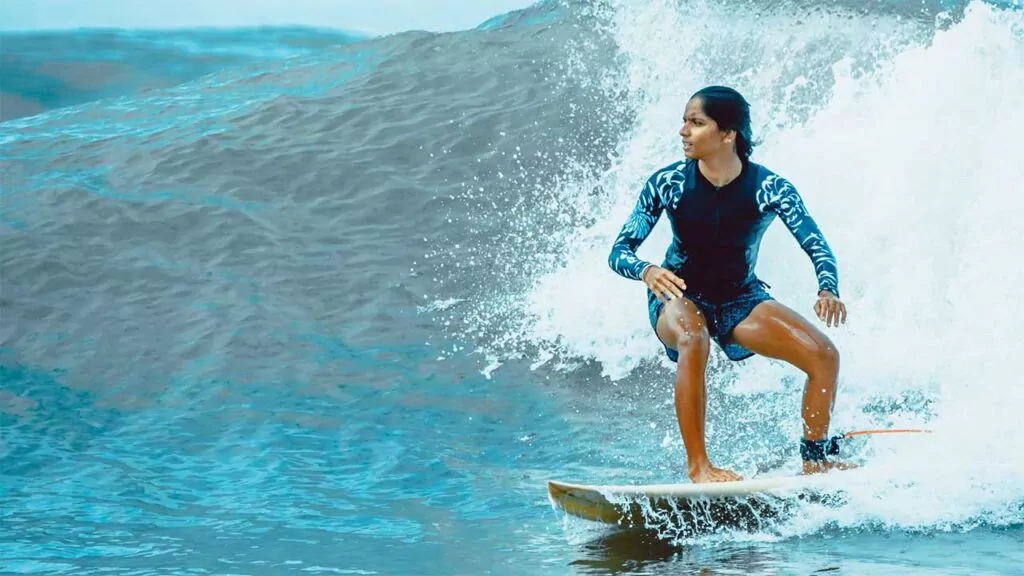
The Andaman and Nicobar Islands, an Indian union territory in the Bay of Bengal, offer a unique blend of pristine beaches, lush rainforests, and rich indigenous cultures. This remote archipelago of over 570 islands provides visitors with an off-the-beaten-path tropical paradise experience.
Natural Beauty
The islands boast stunning natural landscapes:
- Radhanagar Beach: Often ranked as one of Asia’s best beaches
- Mahatma Gandhi Marine National Park: vibrant coral reefs and diverse marine life
- Saddle Peak National Park: The highest point in the islands, with panoramic views.
Indigenous Cultures
The islands are home to several indigenous tribes:
- Jarawa: One of the most isolated tribes in the world
- Great Andamanese: A confederation of tribes with a rich cultural heritage
- Sentinelese: An uncontacted tribe living on North Sentinel Island (off-limits to visitors)
Note: Strict regulations govern interactions with indigenous tribes to safeguard their way of life and health.
Activities and Experiences
- Snorkeling and Scuba Diving: Explore vibrant coral reefs and underwater caves.
- Trekking: Walk through lush rainforests and mangrove creeks.
- Water Sports: Try kayaking, jet skiing, and parasailing.
- Historical Sites: Visit the Cellular Jail, a former British colonial prison.
Marine Life and Wildlife
The islands are rich in biodiversity.
- Dugongs: You can spot these rare sea mammals in the waters surrounding the islands.
- Saltwater Crocodiles: Found in the mangrove creeks and estuaries
- Endemic Birds: Home to several species found nowhere else in the world
Andamanese Cuisine
The coastal location greatly influences the local cuisine.
- Seafood: Fresh catches prepared in various styles
- Coconut-based Dishes: Reflecting the Tropical Environment
- Indigenous Ingredients: Unique local fruits and vegetables
Practical Information
- Best Time to Visit: October to May for the best weather
- Permits: Special permits are required for some areas, while restricted area permits are required for foreign nationals.
- Currency: Indian Rupee (INR)
- Getting Around: Ferries between islands, buses, and taxis on larger islands.
Conservation Efforts
The Andaman and Nicobar Islands face unique environmental challenges:
- Marine Conservation: Programs to protect coral reefs and endangered marine species
- Forest Protection: Efforts to preserve the island’s unique ecosystems
- Sustainable Tourism: Developing eco-friendly tourism practices
Conclusion
The Indian Ocean region offers a diverse array of experiences for the discerning traveler. From the luxurious overwater bungalows of the Maldives to the unique wildlife of Madagascar, from the cultural richness of Sri Lanka to the pristine beaches of the Andaman Islands, each destination has its own distinct charm and appeal.
These nine countries represent some of the most captivating locations the Indian Ocean has to offer. They provide opportunities for relaxation on world-class beaches, adventures in lush rainforests and vibrant coral reefs, encounters with unique wildlife, and immersion in rich and diverse cultures.
As you plan your Indian Ocean adventure, remember that many of these destinations are working hard to balance tourism with conservation. By choosing eco-friendly accommodations and respecting local cultures and environments, you can help ensure that these incredible places remain pristine for generations by come.
Whether you’re seeking luxury, adventure, cultural experiences, or simply a perfect beach getaway, the Indian Ocean has something to offer. Each of these nine countries provides experiences that truly can be described as once in a-lifetime, making the Indian Ocean region a must-visit destination for any serious traveler.

